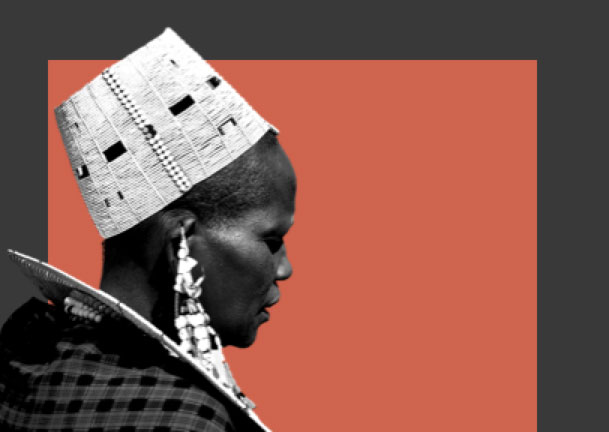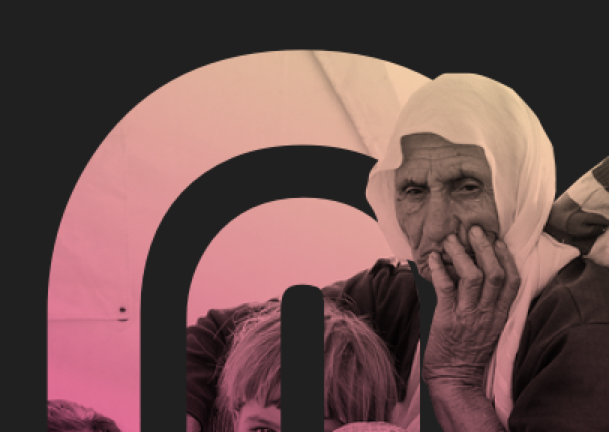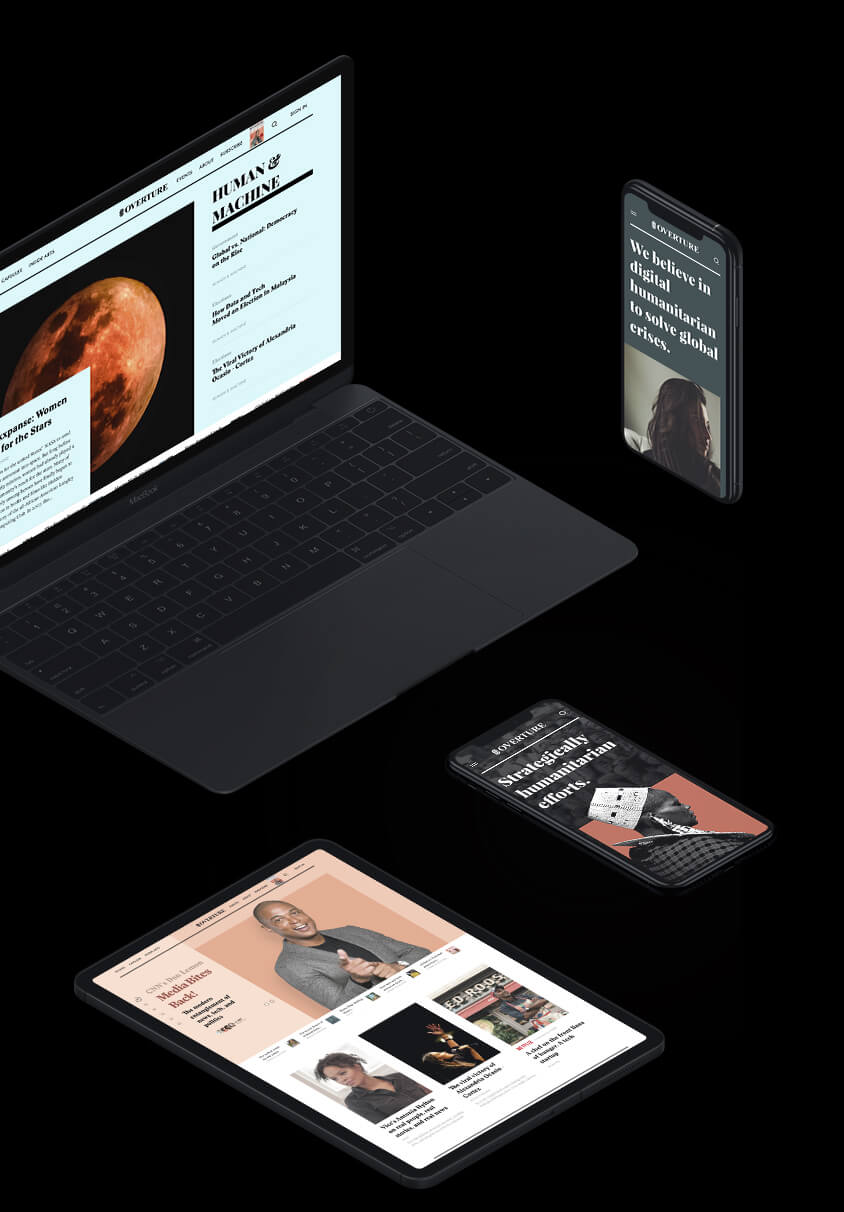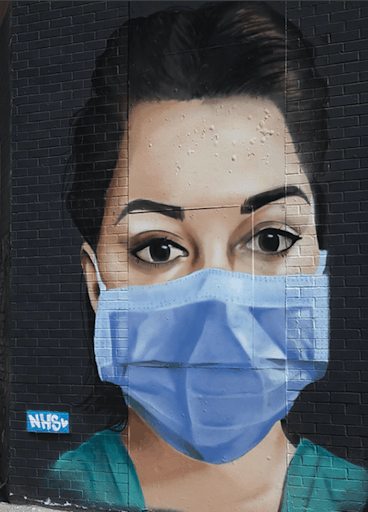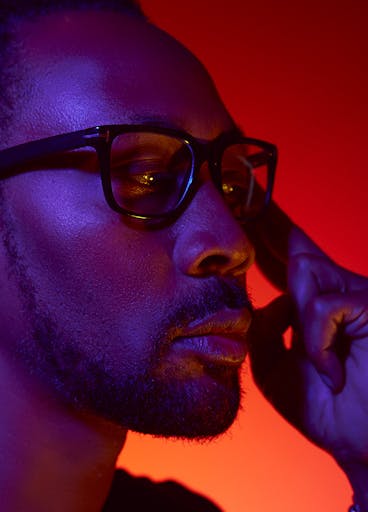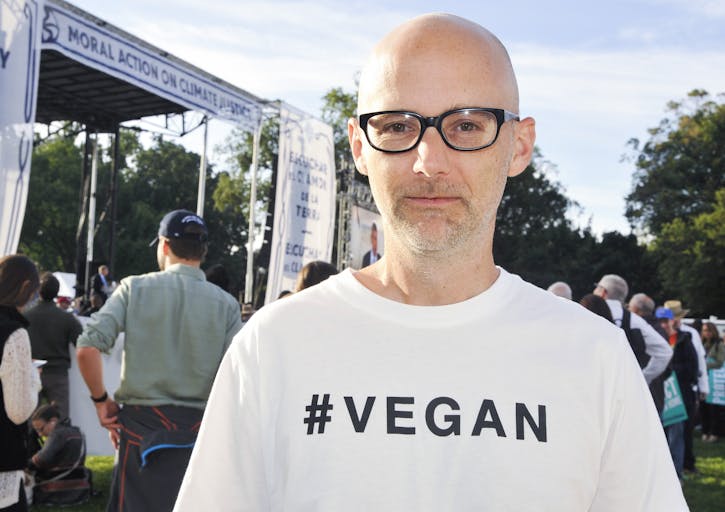In an isolated section of desert outside Tindouf in western Algeria, on the borders of Morocco, Mauritania, and Algeria, the 173,000 refugees of the five Sahrawi camps have been facing a food crisis for 43 years. The Sahrawi people fled to Tindouf from Western Sahara—a Spanish colony until 1976—after Spain relinquished power during the Madrid Accords where the territory was divided between Morocco and Mauritania. From that point there was a conflict over the territory, and the Polisario Front insurgency began.
Originally set up in 1973 by Sahrawi students to fight for independence and resist colonialism, Polisario declared the area the independent state of SADR (Sahrawi Arab Democratic Republic) in February 1976.
Three years later Mauritania withdrew and actually recognised the Sahrawi Arab Democratic Republic causing tension with Morocco. A bloody war between Morocco and Polisario broke out, causing thousands of Sahrawis to flee over the border into Algeria.
A cease-fire agreement was reached in 1991, but the political situation remains unresolved to this day, and Polisario now governs the camps, with assent from Algeria. Food security here is an ever-increasing problem. The harsh climate of the desert, which can reach 122 degrees F (50 degrees C) in summer and drop to freezing at night, means that standard methods of food production are unsustainable.
The heat of the sun, the sandstorms, and low supplies of water mean that the community relies largely on food aid. But a decrease in humanitarian funding is taking its toll, partly due to the Sahrawis' decreased visibility relative to other global crises. (The SaharaMarathon, which is run through the Sahrawi camps, does help to raise awareness among the international community each year. But that hasn't been enough of late.)
“They tried traditional solutions and had some good results, but it was impossible to cover even one percent of their needs,” explains Sahrawi refugee Taleb Brahim, who was still a child when the Sahrawis first crossed the border to live in Algeria.
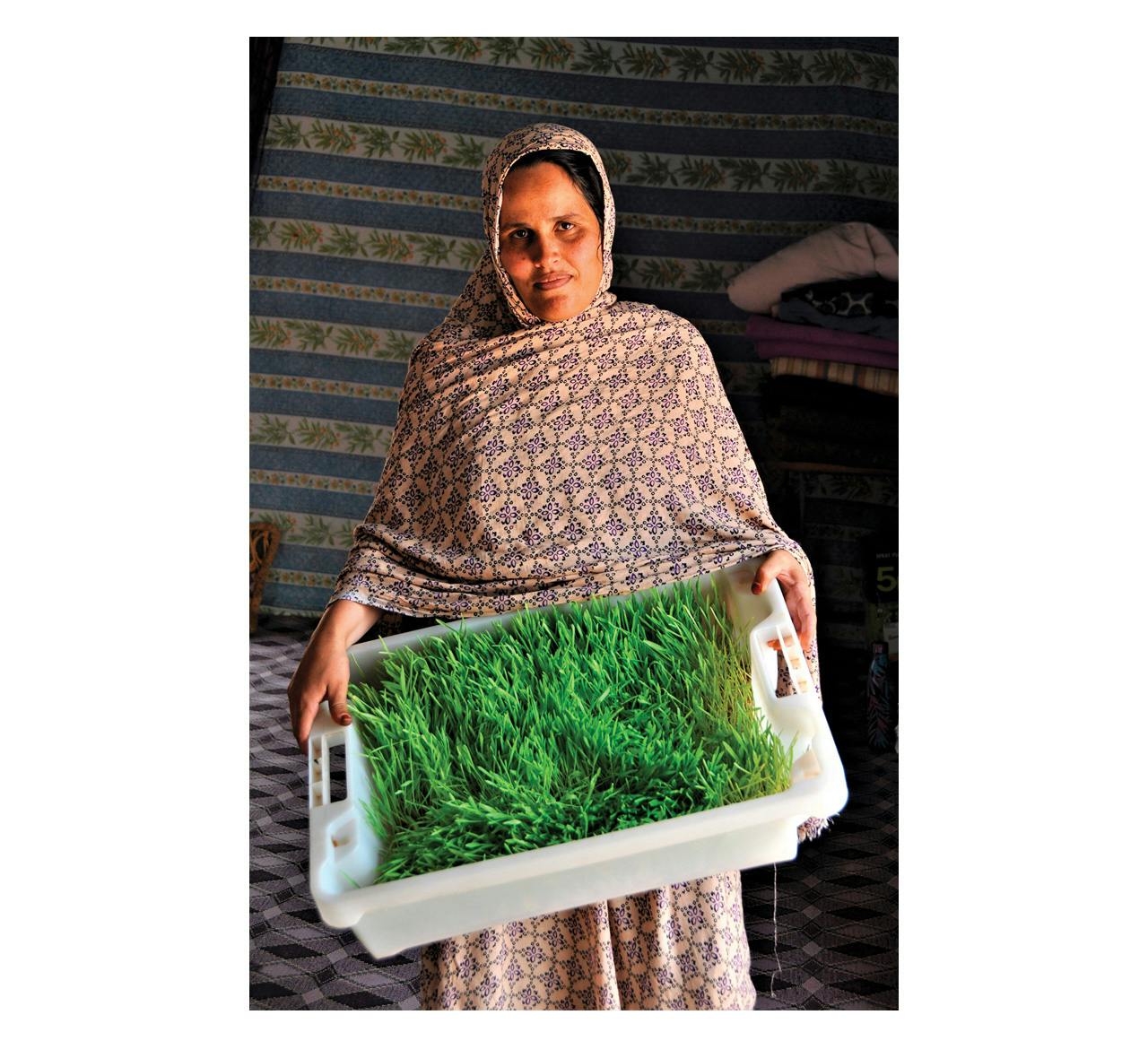
A TRAY OF HYDROPONIC BARLEY FODDER GROWN IN ALGERIA
Today, 88 percent of Sahrawi refugees are food insecure. Around 40 percent of children under five and Sahrawi women of reproductive age suffer from anemia, and severe malnutrition affects five percent of all children. Every fifth child has stunted growth. Households that had been able to keep one or two goats or sheep for fresh milk and meat found that the products were easily contaminated due to the animals’ poor diet. Inadequate fodder also meant breeding was out of the question.
“The food from the international community was counted on how many calories can keep us alive, and since 1975, we’ve been sent food baskets for cases of emergency, consisting of dry foods, oil, sugar, pulses, bread flour, and rice,” says Brahim. As formerly nomadic people, meat had been a large part of their diet, which was no longer included. “Plus, no vegetables and no fruit, and a shortage of water.”
The Polisario’s Sahrawi Ministry of Education, Health, and Social Affairs has been responsible for the refugees’ education within the camps, which includes primary and secondary schools, as well as exchanges and programs for study abroad in other countries.
This educational migration strategy has likely helped the Sahrawi refugee community pave a way to self-sufficiency. This is certainly Brahim's entrepreneurial dream, and after graduating in agricultural engineering from Tishreen University in Syria, he completed a postgraduate course at Kadir Has University in Istanbul, Turkey, where he learned as much as he could about tropical agriculture and permaculture.
Over the years, in between working on a home gardens project and quality control for the camps' incoming fruit and vegetables, Brahim has been innovating and experimenting with various food supply systems. One of his inventions, the Hydro-Sahrawi project, won the Jury’s Choice award at the World Food Programme's (WFP's) Innovation Pitch Night in Germany. A low-tech hydroponics system that can grow enough green fodder for 30 animals a day in shipping containers, it is perfectly adapted to the desert environment, as it only uses 10 percent of the water that traditional agriculture requires. The project was then financed for development through the WFP’s H2Grow initiative.
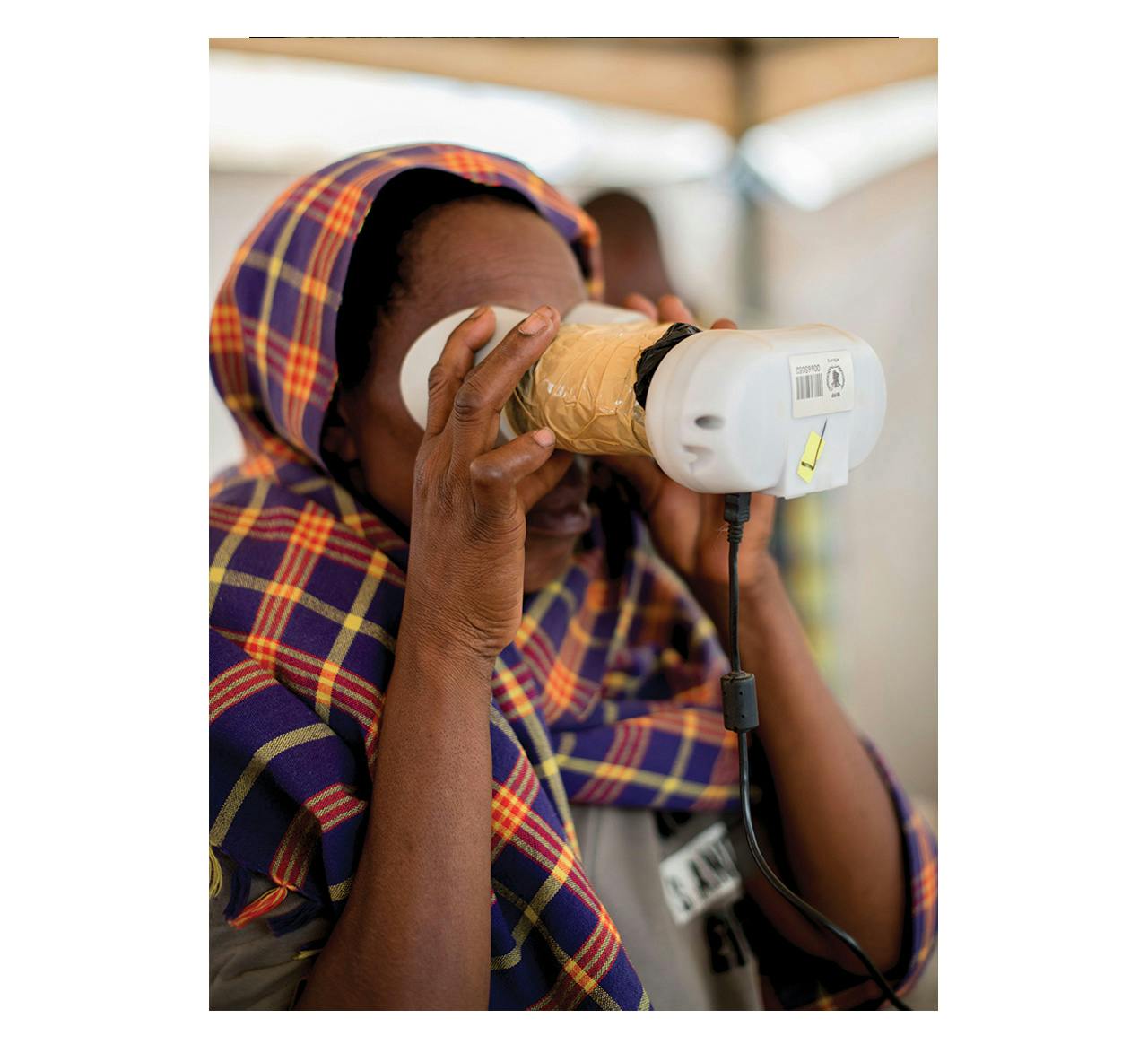
FOOD DISTRIBUTION USING BIOMETRIC VERIFICATION IN THE NAKIVALE REFUGEE SETTLEMENT IN UGANDA
“The main function of the hydroponics system is germinating seeds without using soil,” explains Mohamed Ouchene in an email. He is the Hydroponics Project coordinator for Oxfam, which is responsible for the development of the project in the field.
“After a pre-germination phase, during which these seeds are soaked in water for 24 hours, they are then left to rest for 24 hours, placed on a propagation tray, and watered regularly to keep them moist,” he continues. “After seven days we achieve a carpet of green hydroponic fodder that is ready to be consumed by animals.”
From starting with three experimental units in 2016, there are now 250 units in operation, in several different sizes: a family kit that provides 22–31 pounds (10–14 kg) of barley fodder per day (enough for five to six animals); a medium producing 79–93 pounds (36–42 kg), and a large providing 159–185 pounds (72–84 kg). Reports show that if the goats eat only this fresh fodder, their milk supply can increase by 250 percent, and it also boosts the quality of their meat.
“I want this to reach poor people all over the world who have nothing and who don’t have space,” says Brahim.
Having helped around 1,600 refugees already, there is scope for the project to spread across all five of the Sahrawi camps as well as other parts of the world. Recently, Ouchene's Oxfam colleagues from Niger and Chad came to discuss how the new technology could be rolled out in their countries.
Work has also begun on extending the hydroponic technique to produce fruit and vegetables humans can eat. “The tests show the first encouraging results in terms of productivity (higher than traditional methods) and a big saving of water usage (more than 70 percent) compared with traditional methods,” says Ouchene.
Brahim's vision extends even further. “My idea is to create, produce, and develop a model that can produce all the needs of [a] refugee family—fish, vegetables, fruit, fodders, meat, milk, eggs, and chicken all in one system, with each of those components serving the other one,” he explains. He describes how the chickens will eat insects from the garden, their manure compost will go to the vegetables, the vegetable waste will be served as fodder for the animals, fish waste will be mixed with water for the vegetables, and so on.
Ensuring that refugees receive the correct amount of food is a global problem. At the Oruchinga Refguee Camp in southern Uganda, there are 7,000 registered refugees who have fled violence and persecution from Democratic Republic of the Congo, Rwanda, and Burundi. Most rely on food aid.
In 2018, a biometric registration system was put in place across Uganda to solve unfair food distribution problems that were often caused by multiple registrations and double dipping. It was a joint project with WFP, the United Nations High Commissioner for Refugees (UNHCR), and the Office of the Prime Minister of Uganda, starting with Oruchinga in March 2018, and covering 17 locations over 500 miles (800 km) by October. During this time, 1.15 million refugees had their biometric data collected (ten fingerprints and two iris scans). Microsoft and Accenture provided the technology, which was based on Microsoft’s Customer Relations Management Platform.
“WFP introduced biometric identity verification at food assistance distribution sites, meaning the identity of each head of household or alternate was verified (using fingerprints or iris scan) before they could collect their food,” explains El Khidir Daloum, the WFP Country Director in Uganda.
Maria Macumi, a mother of four and a refugee at Oruchinga, arrived nine years ago from Burundi. She escaped across the border after her husband was murdered. “I knew they were looking for me and my children too, so I ran to Uganda,” says Maria. “It’s been peaceful for us here, and I can get some small money from farming for soap and clothes, but I still need the food from WFP to feed all my children.”
Like those of all refugees in the system, Macumi's ration card is scanned at the start of the food distribution process, and then her identity is verified using an iris or fingerprint scanner. She then scoops her food into sacks before each is weighed to check the amount. Before she leaves, the card is re-scanned to confirm she received the correct supplies.
“Before, I never trusted the amounts I was getting, as people would interfere . . . now I am sure I am getting the right amounts of food,” she says.
For the nearly one million Rohingya refugees in Cox’s Bazar in Bangladesh, access to enough clean water is an urgent problem on a long list of vital needs.
At the height of the crisis in 2017, the Rohingya were the victims of extreme violence from Rakhine people in Myanmar. Women were raped, families were murdered, and children were thrown onto fires while villages burned. Traumatized, yet having to endure long agonizing journeys to safety, those who made it across the border to Bangladesh were welcomed by the Bangladesh government, which provided 6,000 acres of land. There thousands of shelters were hurriedly constructed out of bamboo and plastic sheeting.
The magnitude of this humanitarian crisis and the vulnerability of the Rohingya people created an enormous challenge for aid agencies to provide health care, trauma support, and food security. The United Nations Office for the Coordination of Humanitarian Affairs (OCHA) drew up a funding budget of $950.8 million to cover the vast requirements. Food and water topped the list. Water was scarce, but, worse, due to the speed in which emergency infrastructure had been set up, it was becoming contaminated, increasing the risk of cholera and other diseases. Out of 5,731 shallow tube wells, around 20 percent needed to be rebuilt; plus, the hand-pump-operated wells are expensive to run and maintain.
“Many refugees are at risk of drinking contaminated water,” explains Jaime Corbi, one of Oxfam's water and sanitation experts at Cox's Bazar. “A high percentage of current tube wells in the camps are providing non-potable water, and not everyone is adding purification tablets to make the water safe to drink.”
In 2018, five new water networks were constructed through a UNHCR, Doctors Without Borders, Oxfam, and BRAC initiative, with nine more planned during 2019. Oxfam developed the design of the new systems, which was shaped by consulting with the refugees themselves. It was especially important to get input from women and teenagers, since they use the systems the most.
“Women felt more comfortable with sites away from crowded roadsides, with a solar-powered overhead light for safety,” he says. “It was important that taps stands are easily accessible for all the community, including the elderly and disabled.”
Solar-powered pumps were chosen, as they are less expensive and more environmentally friendly, and water chlorination was done at source, which is far safer for the community.
“Each of the 139 or so water distribution systems has a borehole drilled more than 200 meters deep to reach a source of water, which is pumped up to the surface by a solar-powered system that can draw 100 to 180 cubic meters of water a day,” explains Corbi. “Water is stored in a large tank, treated by a chlorination in-line system to make it safe to drink, then piped to collection points where it can be easily accessed at the turn of a tap.”
Another 130 systems will be rolled out across the camp by Oxfam, serving every refugee in the entire camp with 20 liters of safe water daily by 2020.
“Engaging the community fully in the project creates a sense of ownership,” says Corbi. “The refugees have formed community groups that are responsible for ongoing maintenance, providing feedback and reporting repairs.”

